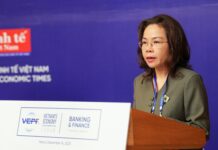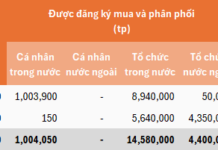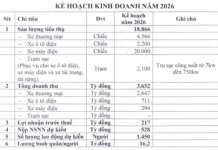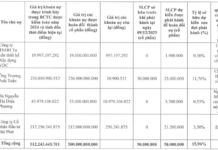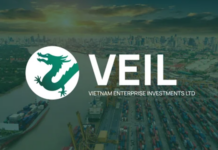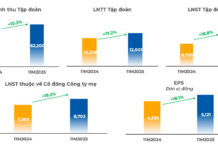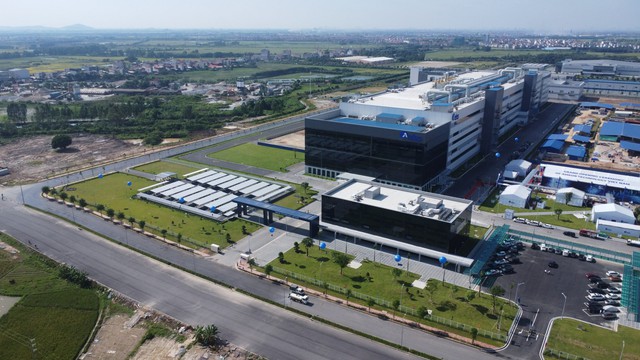
A “Once-in-a-Lifetime” Opportunity to Join the Global Semiconductor Industry Value Chain
Vietnam’s Minister of Planning and Investment, Nguyen Chi Dung, has stated that amidst the trend of supply chain diversification and complex geopolitical developments worldwide, semiconductor industry businesses have been and are relocating to Asian countries to establish headquarters and factories, in order to capitalize on their human resources.
Vietnam possesses several key advantages that affirm its readiness for the semiconductor industry, including: a high level of political determination from both central and local governments; a favorable investment and business environment that has attracted many large FDI enterprises in the electronics sector. Currently, over 50 semiconductor industry businesses are operating in Vietnam, such as Intel, Amkor, Hana Micron (packaging and testing); Ampere, Marvell, Cadence, Renesas, Synopsys, Qorvo (design); Lam Research, Coherent (equipment manufacturing), among others; a high-quality and cost-effective workforce that is already active in the electronics industry and can easily transition to the semiconductor industry, with over 50% of the population under 30 (the “golden population” period) and approximately 1.8 million university and college graduates annually; and Vietnam’s upgraded comprehensive strategic partnership with most countries with developed semiconductor industries.
The Joint Statement on Upgrading the Vietnam-US Comprehensive Partnership highlighted two groundbreaking areas of cooperation: innovation and high technology, including the semiconductor industry. Notably, Vietnam is one of the few countries with which the United States has signed a Memorandum of Understanding on cooperation to develop the semiconductor industry ecosystem, with an emphasis on developing human resources for the industry.
With the aforementioned context and advantages, Vietnam has a “once-in-a-lifetime” opportunity to participate in the global semiconductor industry value chain. In recent high-level meetings between the Prime Minister of Vietnam and US partners, the US side emphasized that in order to seize and realize this opportunity, Vietnam must act swiftly within a period of no more than 24 months. Firstly, it is necessary to finalize specific mechanisms and policies that ensure competitiveness with other countries in the region; secondly, to synchronize infrastructure for electricity, water, transportation, fiber optic cables, and information technology; and thirdly, to develop a high-quality workforce for the industry.
The “Development of Human Resources for the Semiconductor Industry by 2030, with a Vision to 2045” project, which was developed during this period, is highly significant and timely, demonstrating the Government and Prime Minister’s vision for the importance of developing human resources for the semiconductor industry. Vietnam is also a country that is moving faster and more systematically than other developing countries in the region by making the development of human resources a comprehensive project to be implemented fully, comprehensively, and effectively.
Core Elements for Developing Human Resources for the Semiconductor Industry
At today’s conference, the Ministry of Planning and Investment emphasized several core aspects of the Project, as follows:
In terms of approach, during the development of the Project, the Ministry of Planning and Investment adopted an approach focused on training and developing human resources to serve all stages of the semiconductor industry value chain. The output of the training program is a team of high-quality engineers with university degrees (excluding college graduates) from related, relevant, or specialized fields in the semiconductor industry. Effective implementation of the Project requires the participation and involvement of the entire political system, government agencies, businesses, universities, research institutes, international support, and domestic and foreign experts.
Regarding objectives, the Project sets out that by 2030, Vietnamese engineers will be deeply involved in the design process, packaging, and testing stages, mastering a part of the packaging and testing technology; and gradually gaining expertise in the manufacturing process. The goal is to train 50,000 engineers to serve the semiconductor industry across all stages of the value chain, including 15,000 engineers in semiconductor design and 35,000 engineers in other areas of the semiconductor industry; at least 5,000 of these engineers will have specialized expertise in artificial intelligence. Approximately 1,300 lecturers with international qualifications will also be trained.
According to the Project’s estimates, to achieve the set objectives, the total estimated budget for implementing the main tasks and solutions of the Project by 2030 is approximately 26,000 billion VND (more than 1 billion USD), of which the state budget will contribute approximately 17,000 billion VND and socialized sources will contribute approximately 9,000 billion VND.
This budget is calculated based on the cost of equipment and personnel according to international standards and practices, divided into specific work items for each group of tasks, solutions, and implementing organizations.
In order to achieve the Project’s objectives and to establish a basis for developing a comprehensive and feasible system of solutions and tasks for implementing the Project, the Ministry of Planning and Investment believes that it is necessary to fully understand and agree on the following guiding principles:
Firstly, the development of human resources for the semiconductor industry must be aligned with the requirements of Vietnam’s socio-economic development and with global economic development trends and contexts; to encourage and facilitate businesses to participate in training and recruiting high-quality personnel in the semiconductor industry. Training a high-quality workforce is the top priority for developing the semiconductor industry in Vietnam.
Secondly, to establish breakthrough policies and mechanisms that are favorable for the development of the semiconductor industry and high-quality human resources for the industry; contributing to creating a competitive advantage for Vietnam in the pursuit of sustainable economic development and promoting innovation, and participating in the value chain of the semiconductor industry.
Thirdly, the initial investment and support from the State is a critical factor for the success of the semiconductor industry and the development of high-quality human resources for the industry. The State should consider securing resources to implement the tasks and solutions within the scope of the Project, encourage public-private partnerships, mobilize socialized resources to establish scholarship funds, invest in necessary equipment and infrastructure, and create training, research and development centers, transfer technology, and incubate semiconductor micro-enterprises in research institutes, innovation centers, and universities that train in the semiconductor industry.
Fourthly, training must be based on three-party cooperation between the State, research institutes/universities, and businesses. To strengthen international cooperation to enhance the quality of training. To combine learning with practice and ensure employment opportunities for trainees to work for domestic and foreign businesses. The State plays a leading role; institutes and universities play a central role in the training process; and businesses play a supporting role in developing curricula, providing training, arranging internships, and ensuring employment opportunities.
On this basis, the Ministry of Planning and Investment proposes 7 groups of tasks and solutions to implement the Project.
First, to train lecturers, full-time students; to train postgraduate-level human resources; to









